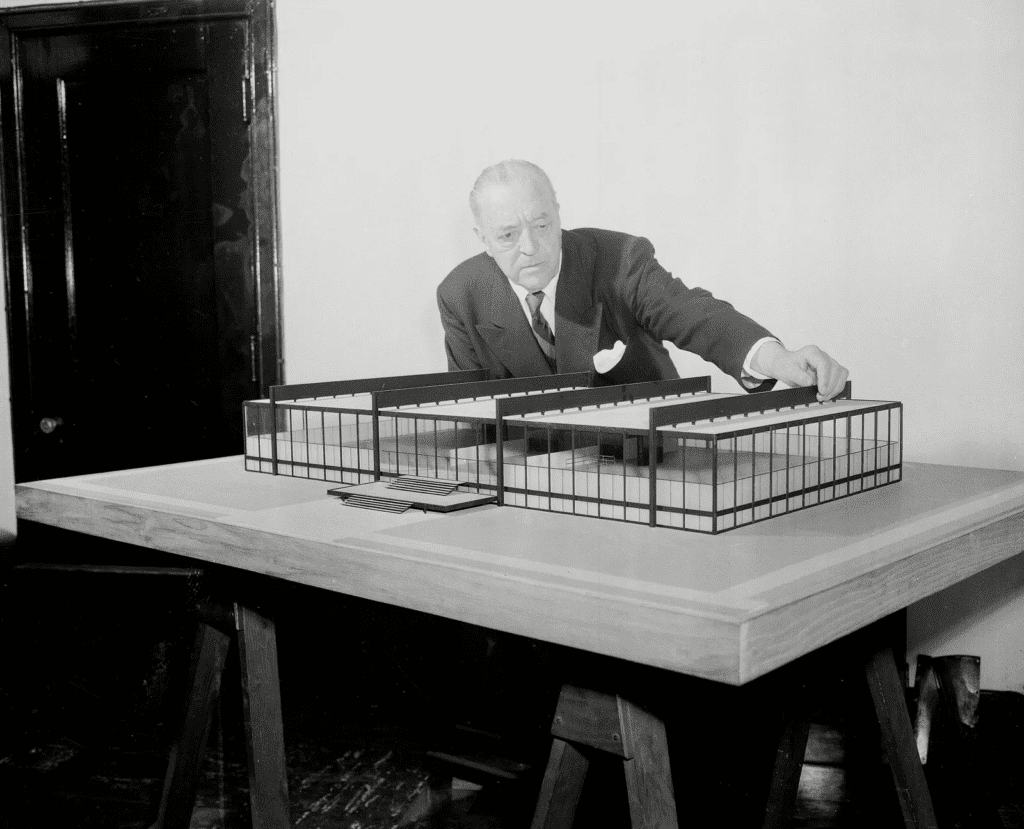The world of architecture is vast and diverse, encompassing a myriad of styles and movements. Yet, amidst this diversity, one philosophy stands out for its simplicity and elegance – minimalism. Minimalism in architecture is a movement that has its roots in the post-World War II era, but its principles are timeless. At its core, it embraces the concept of “less is more,” a philosophy that seeks to strip design down to its essential elements, removing all superfluous details. This article explores the concept of minimalism in architecture, its origins, its key principles, and its enduring impact on the architectural world.
Understanding Minimalism in Architecture
Minimalism in architecture is more than just a design style; it’s a philosophy, a way of thinking about space, form, and function. It’s about reducing design elements to their bare essentials, eliminating unnecessary details, and allowing the fundamental features to stand out. This approach results in designs that are simple yet powerful, uncluttered yet sophisticated.
The key principles of minimalism in architecture include simplicity, functionality, and the use of space. Simplicity is achieved through clean lines, unadorned surfaces, and a restrained color palette. Functionality is paramount, with every element of the design serving a purpose. The use of space is also crucial. Minimalist architecture often features open, flexible spaces, with a focus on the interplay between interior and exterior, light and shadow, solid and void.
The Origins of “Less is More”
The phrase “less is more” is often associated with the German-American architect Ludwig Mies van der Rohe, one of the pioneers of modernist architecture. Mies, as he is commonly known, championed a design approach that was simple, clear, and unencumbered by unnecessary ornamentation. His designs, such as the Barcelona Pavilion and the Farnsworth House, are iconic examples of the “less is more” philosophy, featuring clean lines, open spaces, and a profound sense of simplicity and elegance.

However, the concept of “less is more” extends beyond Mies and his work. It can be traced back to earlier architectural movements, such as the De Stijl movement in the Netherlands and the Bauhaus school in Germany, both of which emphasized simplicity, functionality, and a rational approach to design. These movements laid the groundwork for the emergence of minimalism in the mid-20th century, providing a counterpoint to the ornate and often cluttered designs of the Victorian and Edwardian eras.
Examples of “Less is More” in Architecture
The “less is more” philosophy has given rise to some of the most iconic and influential buildings of the 20th and 21st centuries. These buildings, while diverse in their design, share a common commitment to simplicity, clarity, and functionality.
One of the most famous examples is the Villa Savoye, designed by Swiss-French architect Le Corbusier. Completed in 1931, the Villa Savoye is a masterclass in minimalist design, with its simple geometric forms, open floor plan, and lack of ornamentation. The building is a physical manifestation of Le Corbusier’s famous “Five Points of Architecture,” which advocated for the use of pilotis (reinforced concrete stilts), a free facade, an open floor plan, ribbon windows, and a roof garden.

Another iconic example is the Seagram Building in New York City, designed by Mies van der Rohe. Completed in 1958, the Seagram Building is a testament to the power of minimalist design. Its bronze-clad facade, unadorned save for the I-beams that emphasize its verticality, exudes a sense of strength and elegance. The building’s interior, with its open spaces and high-quality materials, embodies Mies’s belief in the beauty of simplicity.
The Impact of “Less is More”
The “less is more” philosophy has had a profound impact on the field of architecture. It has challenged architects to rethink their approach to design, to strip away unnecessary details, and to focus on the essentials. This has resulted in buildings that are not only aesthetically pleasing but also functional, sustainable, and in harmony with their surroundings.
The influence of “less is more” can be seen in a wide range of architectural styles, from modernist and postmodernist architecture to contemporary design trends such as tiny houses and modular homes. These styles, while diverse, all share a commitment to simplicity, efficiency, and a thoughtful use of space.
Moreover, the “less is more” philosophy has also influenced other areas of design, from product design and graphic design to fashion and interior design. It has inspired designers to create objects that are simple, functional, and beautiful, and has contributed to the rise of movements such as sustainable design and user-centered design.
“Less is More” in Residential Architecture
The principles of “less is more” are not confined to grand architectural projects. They can also be applied to residential architecture, transforming the way we live and interact with our homes. Minimalist homes are characterized by simplicity, functionality, and a thoughtful use of space. They often feature open floor plans, clean lines, and a restrained color palette, creating a sense of calm and tranquility.
One of the key benefits of minimalist residential architecture is its ability to enhance the connection between the interior and exterior. By using large windows, sliding doors, and open floor plans, minimalist homes can blur the boundaries between inside and outside, allowing residents to fully engage with their surroundings.
Moreover, minimalist homes often prioritize quality over quantity. Instead of focusing on size or ornamentation, they emphasize the use of high-quality materials, attention to detail, and a harmonious relationship with the surrounding environment. This can result in homes that are not only beautiful but also sustainable and energy-efficient.
Here are some tips for homeowners interested in incorporating minimalist principles into their own homes:
- Simplify Your Layout: Opt for an open floor plan that allows for flexibility and a seamless flow between spaces.
- Use Natural Light: Incorporate large windows or skylights to maximize natural light and create a connection with the outdoors.
- Choose Quality Materials: Select high-quality, durable materials that will stand the test of time.
- Limit Your Color Palette: Stick to a restrained color palette to create a sense of harmony and cohesion.
- Eliminate Clutter: Keep your spaces clean and uncluttered to highlight the architecture and create a sense of calm.
The Future of “Less is More” in Architecture
As we look to the future, the principles of “less is more” remain as relevant as ever. In a world increasingly focused on sustainability and mindful living, the minimalist approach to architecture offers a way forward. By focusing on simplicity, functionality, and a thoughtful use of resources, minimalist architecture can contribute to the creation of buildings that are not only aesthetically pleasing but also environmentally responsible.
One trend to watch is the increasing use of technology in minimalist architecture. From smart homes equipped with automated systems to buildings designed using digital fabrication techniques, technology is enabling architects to push the boundaries of minimalist design.
Another trend is the growing interest in modular and prefabricated architecture. These methods, which involve constructing parts of a building off-site and then assembling them on-site, align well with the minimalist ethos. They offer a way to create simple, efficient, and customizable buildings, potentially making minimalist architecture more accessible to a wider audience.
Conclusion
The philosophy of “less is more” has left an indelible mark on the field of architecture. It has challenged us to rethink our approach to design, to strip away unnecessary details, and to focus on the essentials. In doing so, it has shown us that simplicity, functionality, and a thoughtful use of space can result in designs that are not only beautiful but also meaningful and sustainable.
As we look to the future, the principles of “less is more” offer a roadmap for creating buildings that are in harmony with their surroundings, respectful of their resources, and responsive to the needs of their inhabitants. Whether we are designing a skyscraper, a family home, or a tiny house, the philosophy of “less is more” reminds us that in architecture, as in life, the simplest solutions are often the best.









